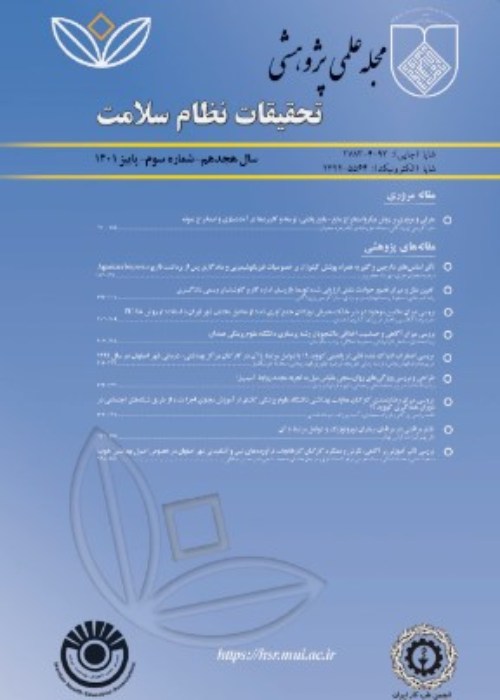Evaluation of Bioaerosols Concentration in Indoor and Outdoor Air of Kindergartens and Schools during Winter 2016 in Andimeshk, Iran
In addition to chemical contaminants, the air we breathe may contain various microorganisms that can cause infectious and allergic diseases. This study aimed to evaluate the concentration of bioaerosols in indoor and outdoor air of school and kindergarten buildings in Andimeshk, Iran. Moreover, the indoor-to-outdoor concentration ratios (I/O) were calculated to identify the sources of contamination during winter 2016.
In this cross-sectional descriptive study, 216 air samples were taken from the indoor and outdoor of the school and kindergarten buildings during winter 2016 (i.e., January, February, and March) in Andimeshk, Iran. The sampling was performed using an Andersen single-stage impactor containing a culture medium and an SKC Pump based on the methods recommended by the American Conference of Governmental Industrial Hygienists. Bacterial samples were incubated at 37°C for 2 days and fungal samples were stored at room temperature for 3 to 5 days. Subsequently, the colonies were counted and reported as the colony counts per cubic meter (CFU/m3).
The school No.4 obtained the highest mean of indoor (1504 CFU/m3) and outdoor (1295 CFU/m3) bacterial concentration. Moreover, kindergartens No. 4 and 3 obtained the highest mean of indoor (249.6 CFU/m3) and outdoor (323.3 CFU/m3) fungal concentration, respectively. In addition, the lowest mean of indoor (513.5 CFU/m3) and outdoor (221.6 CFU/m3) bacterial concentration were related to school No. 6 and kindergarten No. 5, respectively. In the same line, kindergarten No. 5 obtained the lowest and highest mean of indoor (147.6 CFU/m3) and outdoor (174.3 CFU/m3) fungal concentration. The highest mean (46.2 CFU/m3) of indoor fungal concentration (i.e., Aspergillus fumigatus) was related to school No. 1, and the lowest mean (4.61 CFU/m3) in this regard was observed in kindergarten No. 3.
Based on the results, the mean amount of indoor bacteria concentration at all buildings understudy was greater than that proposed by the World Health Organization (500 CFU/m3). This can be the cause of respiratory diseases and a threat to children's health. A study of I/O in elementary schools and kindergartens showed that the sources of bacterial and fungal contaminations were mostly indoor and outdoor, respectively. Therefore, there is a need for continuous monitoring and developing prevention management programs.
Bacteria , Bioaerosol , Fungi , Kindergarten , School
- حق عضویت دریافتی صرف حمایت از نشریات عضو و نگهداری، تکمیل و توسعه مگیران میشود.
- پرداخت حق اشتراک و دانلود مقالات اجازه بازنشر آن در سایر رسانههای چاپی و دیجیتال را به کاربر نمیدهد.


